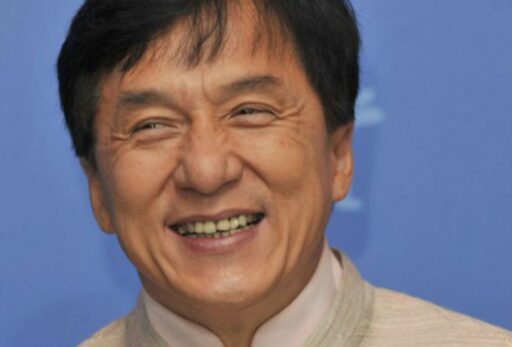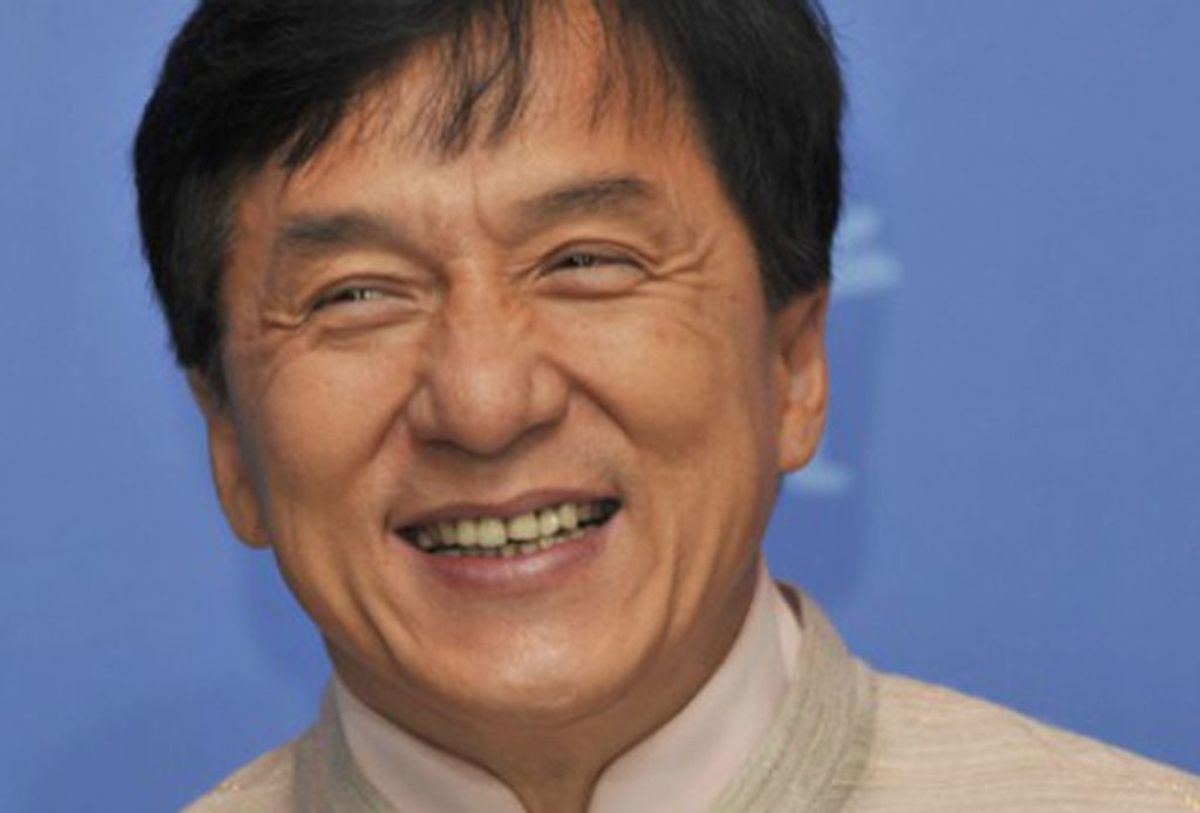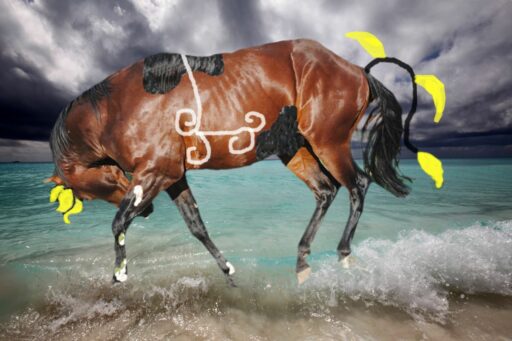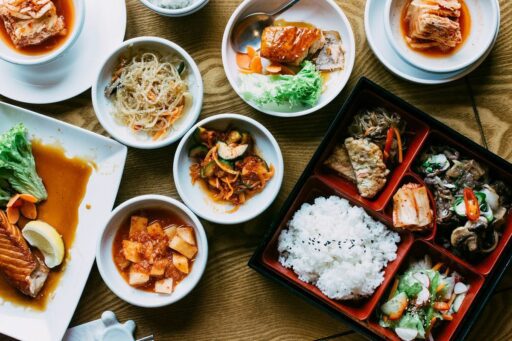Jackie Chan’s ascent in the film industry is not just a tale of a martial artist turned actor, but a saga of innovation, perseverance, and global influence. From his early days performing stunts to carving out a new genre with his unique blend of comedy and kung fu, Chan’s journey mirrors the evolution of Hong Kong cinema itself. His cinematic legacy, punctuated by his willingness to perform death-defying stunts, has not only entertained audiences worldwide but also reshaped the action genre. This article explores the remarkable trajectory of Jackie Chan’s career and the indelible mark he has left on the world of film.
Key Takeaways
- Jackie Chan emerged from Bruce Lee’s shadow to create a new cinematic identity by fusing humor with martial arts, which became a hallmark of his filmography.
- During the 1970s, Chan’s rise paralleled the golden age of Hong Kong cinema, influencing contemporaries and setting a new standard for action choreography.
- The 1990s saw Chan broaden his acting range with an array of roles, solidifying his international stardom with films like ‘Rumble in the Bronx’.
- Chan’s dedication to performing his own stunts, often at great personal risk, added a layer of authenticity to his movies and became a signature aspect of his work.
- Jackie Chan’s legacy endures, inspiring new generations of action stars and maintaining cultural significance through a commitment to preserving his extensive filmography.
Breaking Out of Bruce Lee’s Shadow: The Rise of Jackie Chan

The Early Years and Stunt Work
Jackie Chan’s journey in the film industry began with humble origins, where he initially carved out a niche as a stuntman. His early work was marked by a blend of acrobatic prowess and a natural flair for comedy, which set him apart from his peers. Golden Harvest, a leading film production company, took notice of Chan’s unique talents and provided him with opportunities to transition from supporting roles to the spotlight as a leading man.
- 1962: Chan’s entry into the film industry with ‘Big and Little Wong Tin Bar’.
- Stuntman era: Gained recognition for his acrobatic stunts and comedic timing.
- Golden Harvest era: Transition to leading roles, showcasing a blend of martial arts and humor.
Jackie Chan’s rise to fame was not just about his on-screen talent; it was also a testament to his relentless work ethic and ability to connect with audiences through his physical comedy and daring stunts.
The Birth of Comedy Kung Fu
Jackie Chan’s unique approach to martial arts cinema revolutionized the genre by infusing it with his signature humor and acrobatic prowess. This blend of comedy and kung fu created a new entertainment experience that resonated with audiences worldwide.
- Jackie Chan’s comedic timing
- Integration of slapstick elements
- Seamless incorporation of stunts into fight scenes
The success of this innovative style can be attributed to Chan’s ability to perform breathtaking stunts while maintaining a lighthearted tone. His films often featured underdog characters overcoming obstacles with both skill and wit, a stark contrast to the more serious and stoic heroes of previous martial arts films.
Jackie Chan’s comedic kung fu not only entertained but also broadened the appeal of martial arts cinema, making it accessible to a wider audience.
As we continue exploring the evolution of action cinema, it’s clear that Jackie Chan’s contributions have had a lasting impact, paving the way for the integration of humor and martial arts in contemporary action films.
The Transition to Leading Roles
Transitioning from the Opera School to the film industry, Chan’s early experiences as a stuntman and actor provided invaluable opportunities to showcase his versatility and talent. His unique blend of martial arts and slapstick humor began to crystallize, distinguishing him from his peers and setting the stage for his ascent to stardom.
With each role, Jackie Chan infused his characters with a relatable everyman quality, often portraying the underdog who overcomes obstacles through wit and skill rather than brute force alone.
As Chan took on more prominent roles, his influence on the action genre became undeniable. His films not only captivated audiences in Hong Kong but also started to gain international attention, paving the way for his eventual breakthrough in Western cinema.
The Golden Age of Hong Kong Cinema and Jackie Chan’s Influence

The Acrobatic Choreography of the 1970s
The 1970s marked a significant era in Hong Kong cinema, particularly for the martial arts genre. Jackie Chan’s physicality and creativity set a new standard for action choreography, influencing the direction of action films for decades to come. This period saw the rise of films that were not only martial arts spectacles but also cinematic masterpieces in their own right.
One of the defining features of this era was the innovative choreography that brought fight sequences to life. The Shaw Brothers studio, a powerhouse of martial arts cinema, established a dedicated action choreography department. Legendary choreographers like Lau Kar-leung and Tong Gaai played a pivotal role in shaping the dynamic and visually stunning martial arts sequences that became a trademark of Shaw Brothers films.
The acrobatic choreography of the 1970s was a dance of danger and beauty, a blend of traditional martial arts with a new cinematic language that captivated audiences worldwide.
The following is a list of iconic films from the 1970s that showcased this revolutionary choreography:
- Enter the Dragon (1973): Bruce Lee’s legendary film that cemented him as a global star.
- The Big Boss (1971): Lee’s earlier film that shocked audiences with its raw aggression.
- Five Fingers of Death (1972): Known for beautifully choreographed fights and a memorable training montage.
- The 36th Chamber of Shaolin (1978): A staple of the genre focusing on Shaolin Kung Fu and a rigorous training arc.
Jackie Chan’s Peers: Jet Li, Sammo Hung, and Others
Jackie Chan’s ascent in the film industry was not a solitary journey. He shared the screen with a constellation of stars who have also left their mark on martial arts cinema. Sammo Hung and Yuen Biao, often referred to as the Three Dragons alongside Chan, were among his most frequent collaborators. Their combined efforts contributed to some of the most memorable action sequences of the time.
- Sammo Hung, known for his choreography skills and roles in both film and TV, including the US series Martial Law.
- Yuen Biao, who gained prominence with his break in 1979’s films, showcasing his acrobatic prowess.
- Jet Li, another luminary of the genre, who carved his own path with a distinct style that complemented Chan’s.
The synergy between these stars under the umbrella of Golden Harvest studios was pivotal in popularizing Hong Kong action films globally.
The frequent collaborations within this group were not incidental but a result of the studio system that favored a familiar ensemble. This approach not only fostered a sense of camaraderie but also allowed for the honing of a unique cinematic language that resonated with audiences worldwide.
The Global Impact of Hong Kong Action Films
The martial arts genre, with its dance-like action sequences and archetypal narratives, has left an indelible mark on global cinema. The 1970s saw Hong Kong’s martial arts films break through cultural barriers, captivating audiences worldwide and influencing filmmakers across continents.
In Europe, the genre’s impact was particularly pronounced, with French and Italian directors drawing inspiration from the kinetic energy and moral clarity of these films. This admiration wasn’t limited to Europe; Hollywood too felt the reverberations, with directors like Quentin Tarantino incorporating elements of Hong Kong action into their work.
The legacy of Hong Kong’s martial arts cinema is not confined to the past; it continues to inspire and evolve. The success of films like The Matrix and The Raid is a testament to the enduring appeal of the genre.
The following table illustrates the cross-cultural influence of Hong Kong action films:
| Region | Influence | Example |
|---|---|---|
| Europe | Directorial Inspiration | Le Samourai, Le Cercle Rouge |
| Hollywood | Action Choreography | The Matrix |
| Asia | Genre Evolution | Ong-Bak, The Raid |
As we explore foreign films for a glimpse into diverse lives and experiences, the legacy of Hong Kong action films remains a vibrant part of the cinematic landscape, offering both nostalgia and a communal experience through theatrical re-releases of timeless classics.
The Spectacle of Action: Jackie Chan’s 90s Filmography

Rumble in the Bronx: The North American Breakthrough
In 1995, Jackie Chan’s electrifying performance in Rumble in the Bronx marked a pivotal moment in his career, catapulting him to international fame. The film, set against the urban backdrop of New York City, showcased Chan’s unique blend of martial arts and comedy, resonating with audiences worldwide.
Rumble in the Bronx not only highlighted Chan’s incredible physical abilities but also his capacity to engage viewers with a compelling narrative. Keung, portrayed by Chan, sacrifices his vacation time to confront local gangs and uphold justice, demonstrating the star’s appeal as both an action hero and a charismatic performer.
The success of Rumble in the Bronx is reflected in its rankings and accolades:
- #10 of 176 on The 150+ Best Martial Arts Movies Of All Time
- #7 of 38 on The 35+ Best PG-13 Martial Arts Movies
The film’s impact went beyond box office numbers, as it played a significant role in reviving the martial arts genre in cinema and solidifying Jackie Chan’s legacy as a global icon.
The Diverse Range of Roles and Performances
Throughout the 1990s, Jackie Chan showcased an impressive range of characters, proving his versatility beyond the martial arts genre. His performances were not confined to action-packed sequences; they also displayed depth and humor.
Jackie’s filmography during this era includes a variety of roles, from the disciplined and comedic Wong Fei-hung in ‘Drunken Master II’ to the streetwise protagonist in ‘Rumble in the Bronx’. This period marked a significant expansion of his acting repertoire, catering to a new generation of comedy fans.
Jackie Chan’s ability to blend dramatic storytelling with his unique brand of physical comedy set a new standard for action heroes.
- ‘Rumble in the Bronx’ – North American Breakthrough
- ‘Drunken Master II’ – A Return to Roots
- ‘Police Story 3: Supercop’ – International Espionage
- ‘Thunderbolt’ – High-Octane Racing
Each film not only highlighted Jackie’s physical prowess but also his capacity to engage audiences with a compelling narrative.
Stunts and Injuries: The Price of Authenticity
Jackie Chan’s dedication to performing his own stunts has become a hallmark of his film career, setting a standard for authenticity in action cinema. His fearless approach to stunt work has thrilled audiences but also led to a litany of injuries, underscoring the physical toll such dedication can take.
- Broken bones
- Dislocations
- Concussions
These are just a few of the injuries Jackie Chan has sustained in the pursuit of cinematic realism. His end credit sequences often highlight these harrowing experiences, offering a glimpse into the risks taken during production.
The fusion of comedy and martial arts was not only entertaining but also ground-breaking. Jackie Chan’s willingness to perform his own stunts, often without the use of safety harnesses, added an element of danger and authenticity that resonated with audiences.
Despite the dangers, Chan’s commitment to his craft has inspired a generation of stunt performers and action stars. His legacy is not just in the films he’s made but in the standard he’s set for what audiences can expect from action sequences: a blend of skill, humor, and a touch of the real.
Jackie Chan’s Cinematic Style: Blending Humor with Martial Arts

The Essence of a Martial Arts Movie
Martial arts films have long captivated audiences with their extraordinary displays of physical prowess and intricate fight choreography. At the heart of these movies lies a blend of athleticism, discipline, and a deep-seated sense of honor and respect.
- Spectacle of Action: The visual feast of well-executed martial arts sequences.
- Deeper Themes: Exploring codes of conduct, self-mastery, and the balance between peace and violence.
- Global Influences: Incorporating diverse martial arts styles and cultural elements.
Martial arts movies are not just about the fights; they are about the human spirit overcoming adversity, often with a touch of humor to lighten the intense journey.
As the genre continues to evolve, it embraces a variety of traditional and modern styles, ensuring that martial arts films remain a staple for those who appreciate cinema that showcases the limits of human potential.
Innovations in Fight Choreography
Jackie Chan’s approach to fight choreography revolutionized the martial arts genre. His ability to blend traditional martial arts with elements of physical comedy created a new paradigm for action sequences. Unlike the more serious and traditional styles that dominated the genre, Chan introduced a playful yet skillful technique that resonated with audiences worldwide.
- Unique Fighting Styles: Each martial art brings its own visual flair and combat strategy to the screen.
- Choreography as Art: Fight scenes are crafted like a kinetic dance, emphasizing skillful execution and creativity.
- Superhuman Feats with Realism: The best martial arts films balance the extraordinary with a believable reality.
The raw physicality and dedication of actors performing their own stunts add a layer of authenticity that is difficult to replicate with special effects alone. This dedication to realism, even within the context of superhuman feats, is a hallmark of Jackie Chan’s filmography.
As martial arts cinema continues to evolve, it incorporates diverse heroes and modern filmmaking techniques. Yet, the core of what makes a fight scene truly captivating remains the same: the human potential pushed to its limits, a narrative that Jackie Chan has exemplified throughout his career.
The Role of Humor in Action Sequences
Jackie Chan’s unique blend of humor and martial arts has become a hallmark of his cinematic style. The integration of comedic elements into action sequences not only enhances the entertainment value but also humanizes the characters, making them more relatable to the audience. This approach diverges significantly from the more serious tone often associated with traditional martial arts films.
The use of humor in action scenes serves multiple purposes:
- It provides a counterbalance to the tension and violence.
- It showcases Jackie Chan’s versatility as both a martial artist and a performer.
- It creates memorable moments that resonate with audiences long after the movie ends.
Jackie Chan’s Project A is a prime example of this technique in action, where the humor is seamlessly woven into the fabric of the fight scenes, creating a unique and engaging cinematic experience.
The success of this formula is evident in the way it has influenced the genre, with many modern action-comedies attempting to replicate the charm and appeal of Jackie Chan’s work.
The Legacy of Jackie Chan: Enduring Influence and Future Generations

Inspiring New Waves of Action Stars
Jackie Chan’s influence on the genre of action films extends far beyond his own filmography. His unique blend of martial arts and comedy has inspired a new generation of action stars, who have taken the essence of Chan’s style and infused it with their own cultural backgrounds and martial arts disciplines.
- Iko Uwais from Indonesia, known for his work in ‘The Raid’ series, showcases the intense and brutal Pencak Silat fighting style.
- Tony Jaa from Thailand brings the art of Muay Thai to the big screen with a raw intensity reminiscent of Chan’s early work.
- Donnie Yen from Hong Kong continues to push the boundaries of on-screen martial arts while incorporating mixed martial arts techniques.
The legacy of Jackie Chan is not just in the stunts he performed or the box office records he broke, but in the spirit of innovation and the joy of movement he brought to the action film genre. His impact is evident in the way action cinema has become a global language, spoken with the fists and feet of its diverse new champions.
The Cultural Significance of Jackie Chan’s Work
Jackie Chan’s ascent to international stardom was not just a personal triumph but a cultural milestone. He transformed old-school martial arts movies into a global phenomenon, blending East and West, action and comedy, seriousness and playfulness. His legacy extends beyond the screen, influencing not only the genre of action films but also the global perception of Asian culture and cinema.
Jackie Chan’s approach to filmmaking, characterized by his willingness to perform his own stunts, often without safety harnesses, added a layer of authenticity that captivated audiences worldwide. The inherent danger and his frequent injuries became as much a part of his brand as his comedic timing.
Jackie Chan’s influence is evident in the way action stars today approach their craft. His blend of martial arts, humor, and stunt work set a new standard for action cinema. The following points highlight the breadth of his impact:
- Pioneering the fusion of comedy with martial arts.
- Elevating the status of stunt work in film.
- Inspiring a generation of filmmakers and performers.
- Bridging cultural gaps through a universal appeal.
Preserving the Jackie Chan Filmography for Posterity
The preservation of Jackie Chan’s filmography is not just about maintaining a collection of movies; it’s about safeguarding a cultural treasure that has inspired countless individuals across the globe. Efforts to digitize and restore his films ensure that future generations can experience the same awe and excitement that Jackie Chan’s performances have brought to audiences for decades.
To ensure the longevity of Jackie Chan’s cinematic contributions, several key steps are being taken:
- Digitization of original film reels to prevent degradation
- Restoration of damaged footage to its former glory
- Archiving interviews, behind-the-scenes footage, and promotional materials
- Collaborations with streaming services to make the films widely accessible
The meticulous process of film preservation not only honors Jackie Chan’s legacy but also serves as a blueprint for the conservation of cinematic history at large.
As we look to the future, the continued exploration of Jackie Chan’s career, from his acrobatic stunts to his comedic timing, mirrors the journey of cinema itself. His body of work remains a testament to the enduring appeal of the action genre and its capacity to evolve and resonate with audiences worldwide.
Conclusion
Jackie Chan’s remarkable journey from a stuntman shadowed by the legacy of Bruce Lee to an international icon of martial arts cinema is a testament to his unique blend of athleticism, humor, and sheer determination. His innovative approach to action-comedy and his fearless dedication to performing his own stunts have left an indelible mark on the film industry. As we reflect on his cinematic legacy, it’s clear that Chan’s influence extends far beyond the high-flying stunts and comedic antics; he has redefined the martial arts genre and inspired countless filmmakers and performers. Jackie Chan’s story is one of resilience, creativity, and the relentless pursuit of excellence—a true master of his craft whose films continue to captivate and thrill audiences around the world.
Frequently Asked Questions
How did Jackie Chan break out of Bruce Lee’s shadow?
Jackie Chan soared to international fame in the 1970s by finding his own niche, blending insane stunts, physical comedy, and martial arts, which distinguished him from Bruce Lee and captivated audiences worldwide.
What is Comedy Kung Fu and how is it associated with Jackie Chan?
Comedy Kung Fu is a unique blend of martial arts, slapstick humor, and daring stunts that Jackie Chan pioneered. This formula became his signature style and continues to entertain audiences.
What impact did Jackie Chan have on the Golden Age of Hong Kong Cinema?
During the Golden Age of Hong Kong Cinema, Jackie Chan, along with peers like Jet Li and Sammo Hung, showcased acrobatic choreography and distinct martial arts styles, influencing the global action film scene.
What are some of Jackie Chan’s most influential films from the 90s?
Jackie Chan’s filmography in the 90s includes influential hits like ‘Rumble in the Bronx,’ which marked his North American breakthrough, and showcased his diversity in roles and dedication to authentic stunt work.
What are the core components of a martial arts movie as seen in Jackie Chan’s films?
The core components of a martial arts movie, as exemplified in Jackie Chan’s films, include spectacular action, realistic combat, a compelling journey, and a unique blend of humor.
How has Jackie Chan’s approach to stunt work influenced action cinema?
Jackie Chan’s approach to performing his own stunts, often without safety harnesses, added a level of danger and authenticity to his films. His dedication to stunt work and the injuries sustained have become a highlighted and respected aspect of his cinematic legacy.






